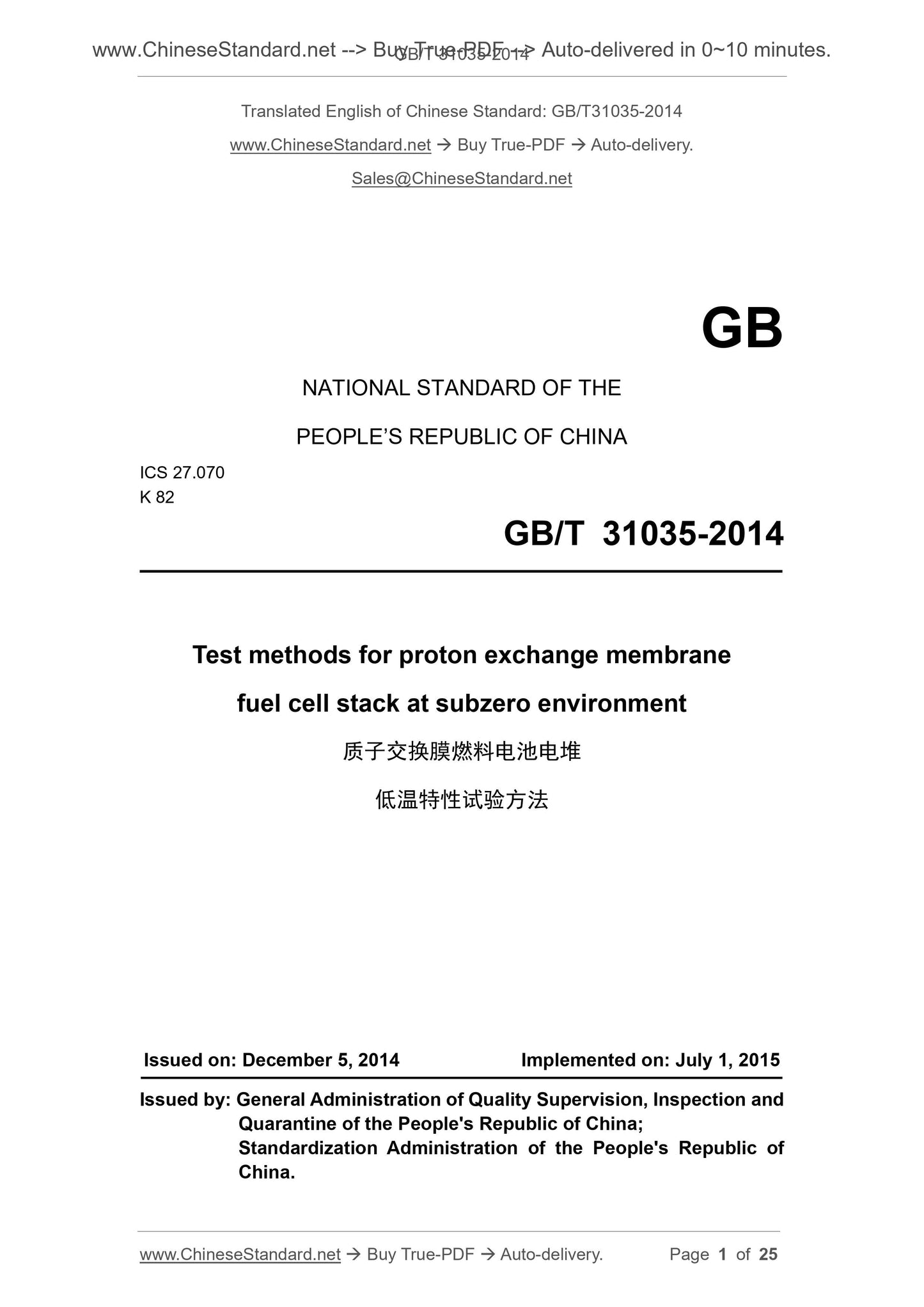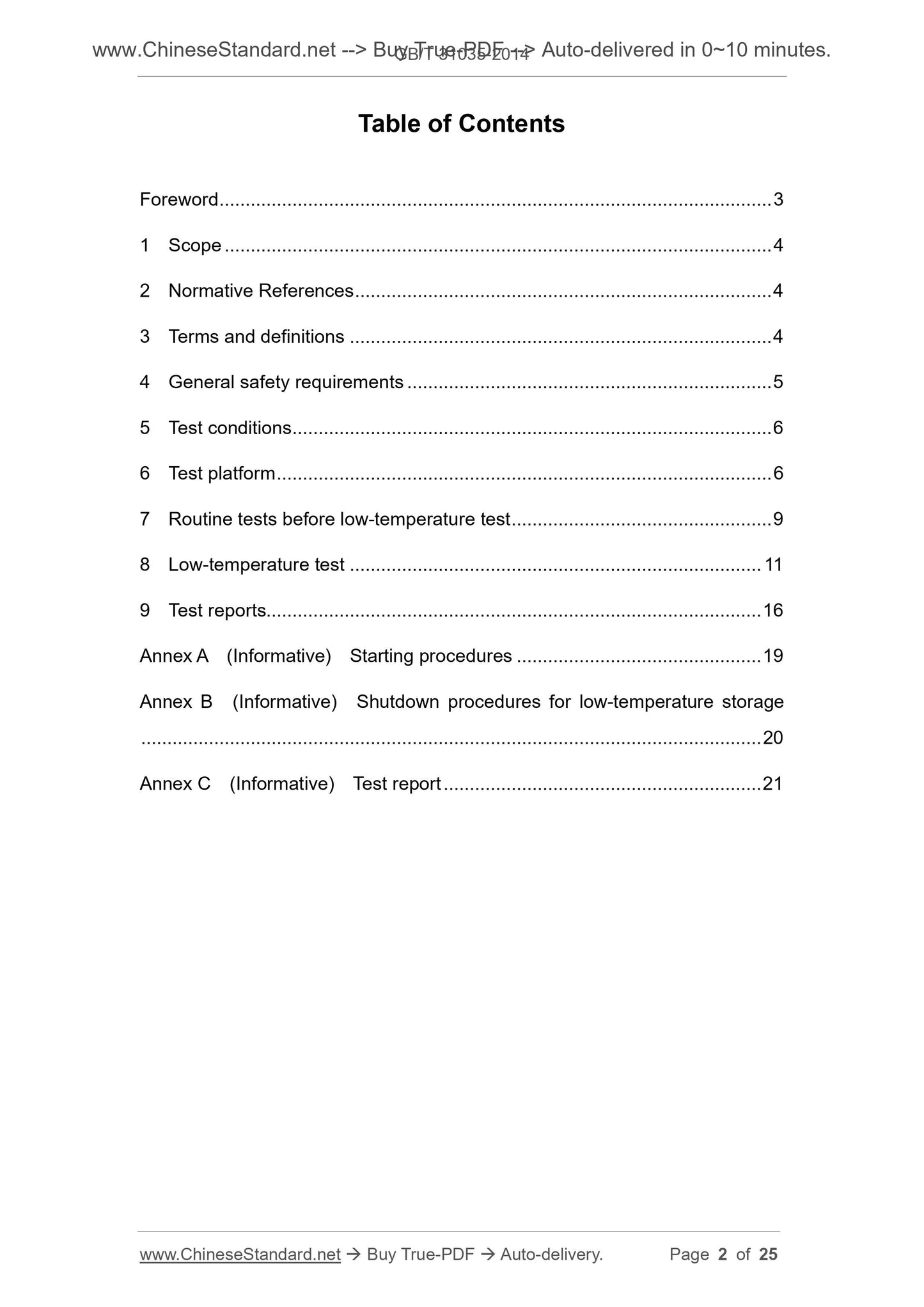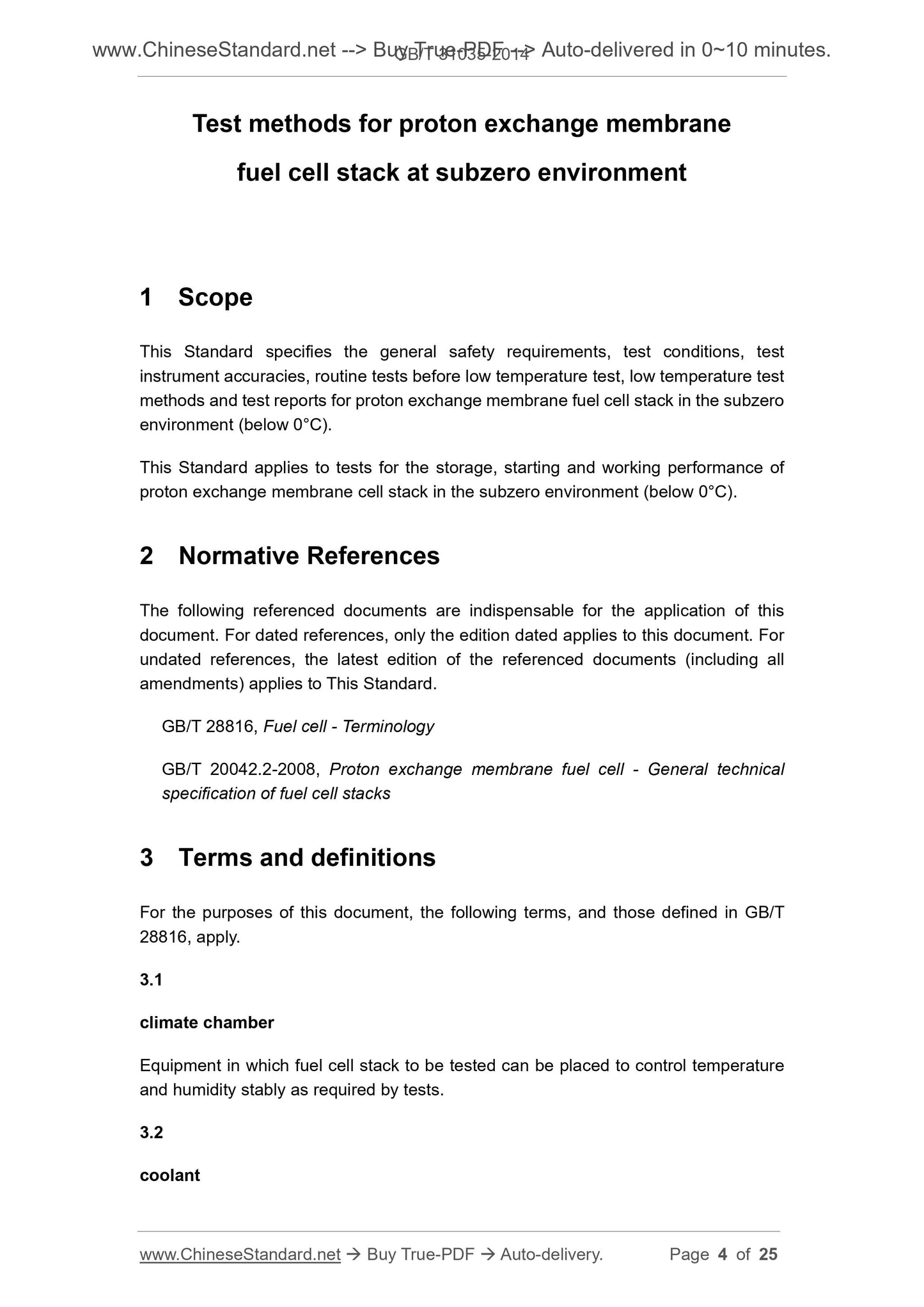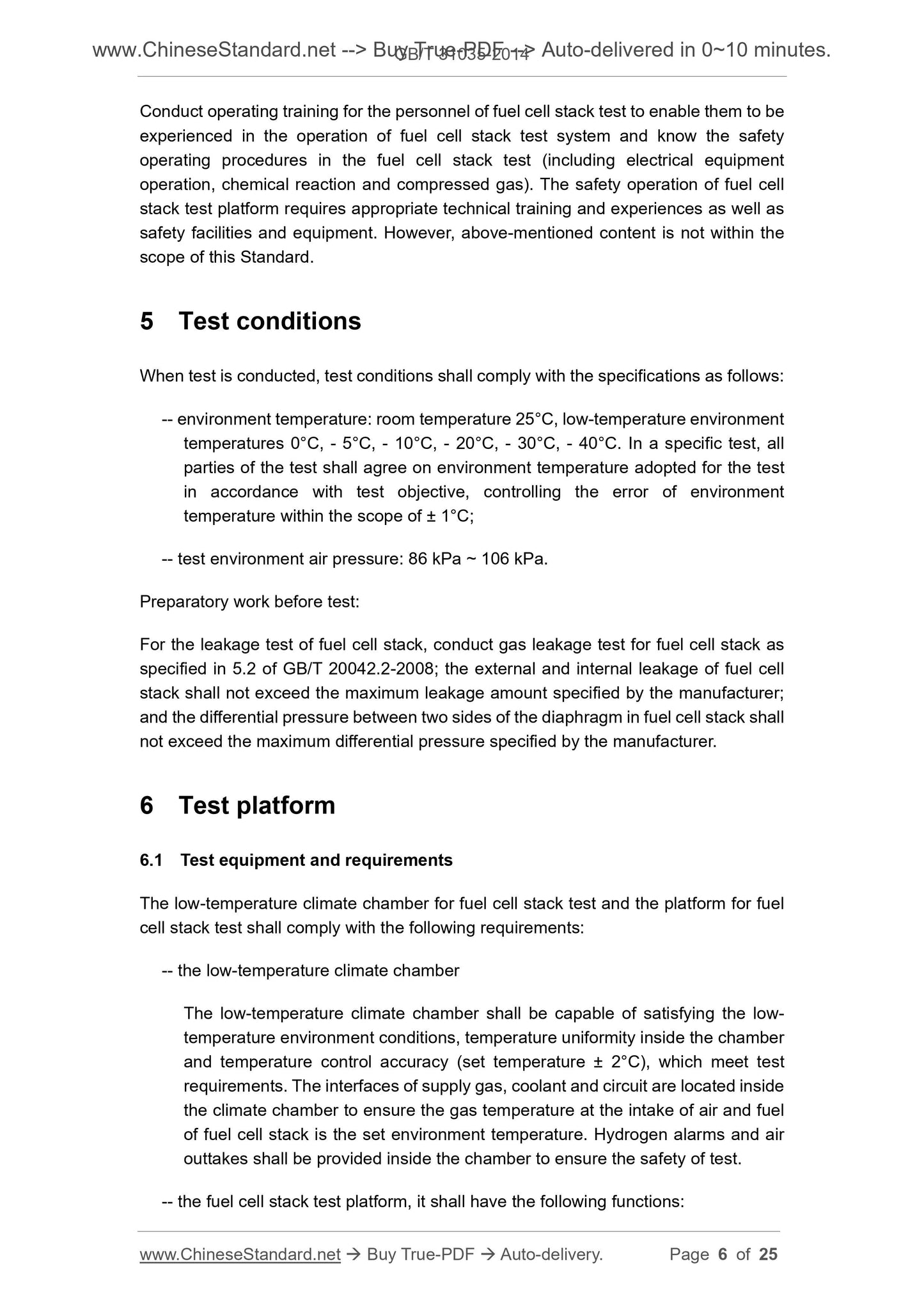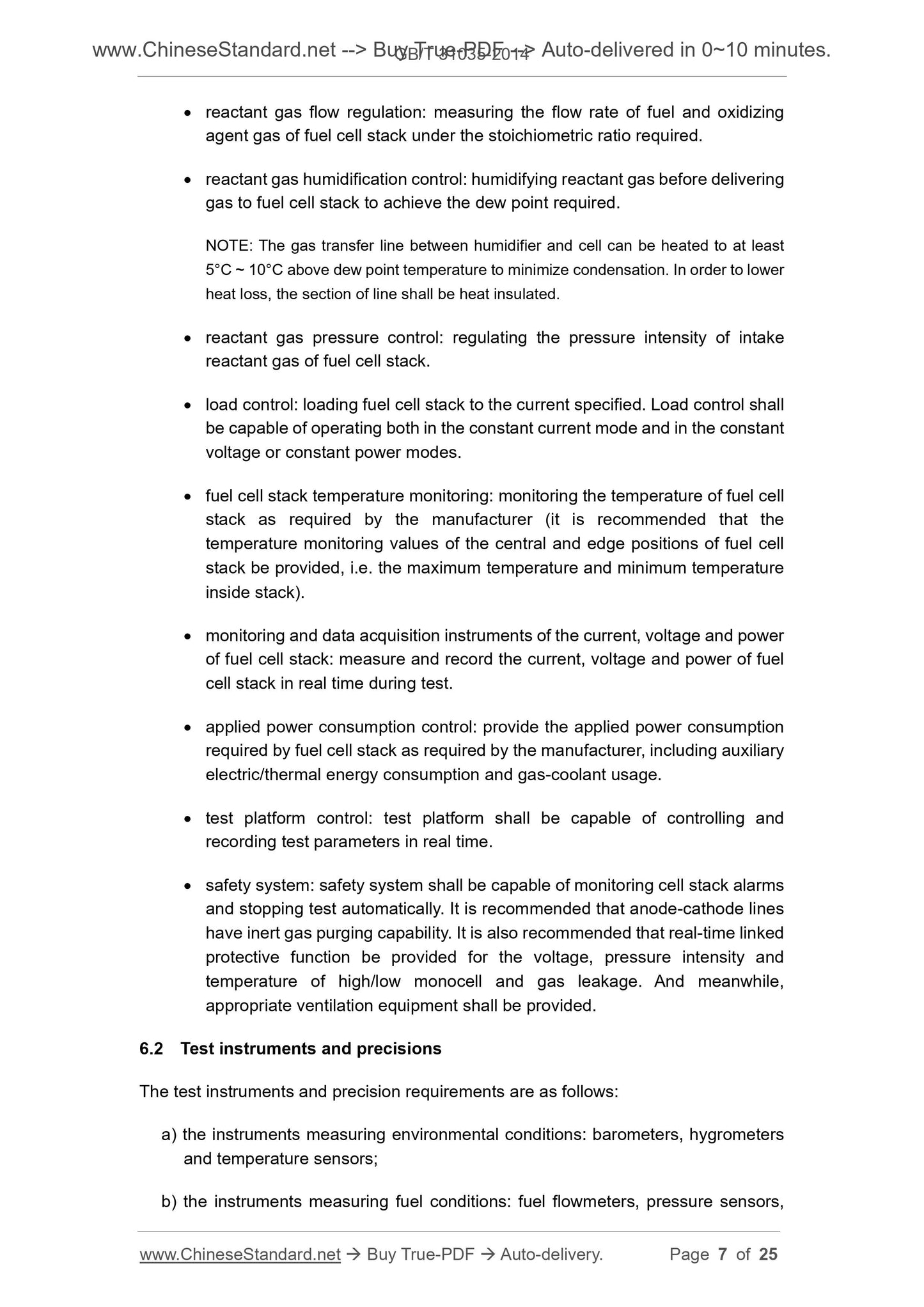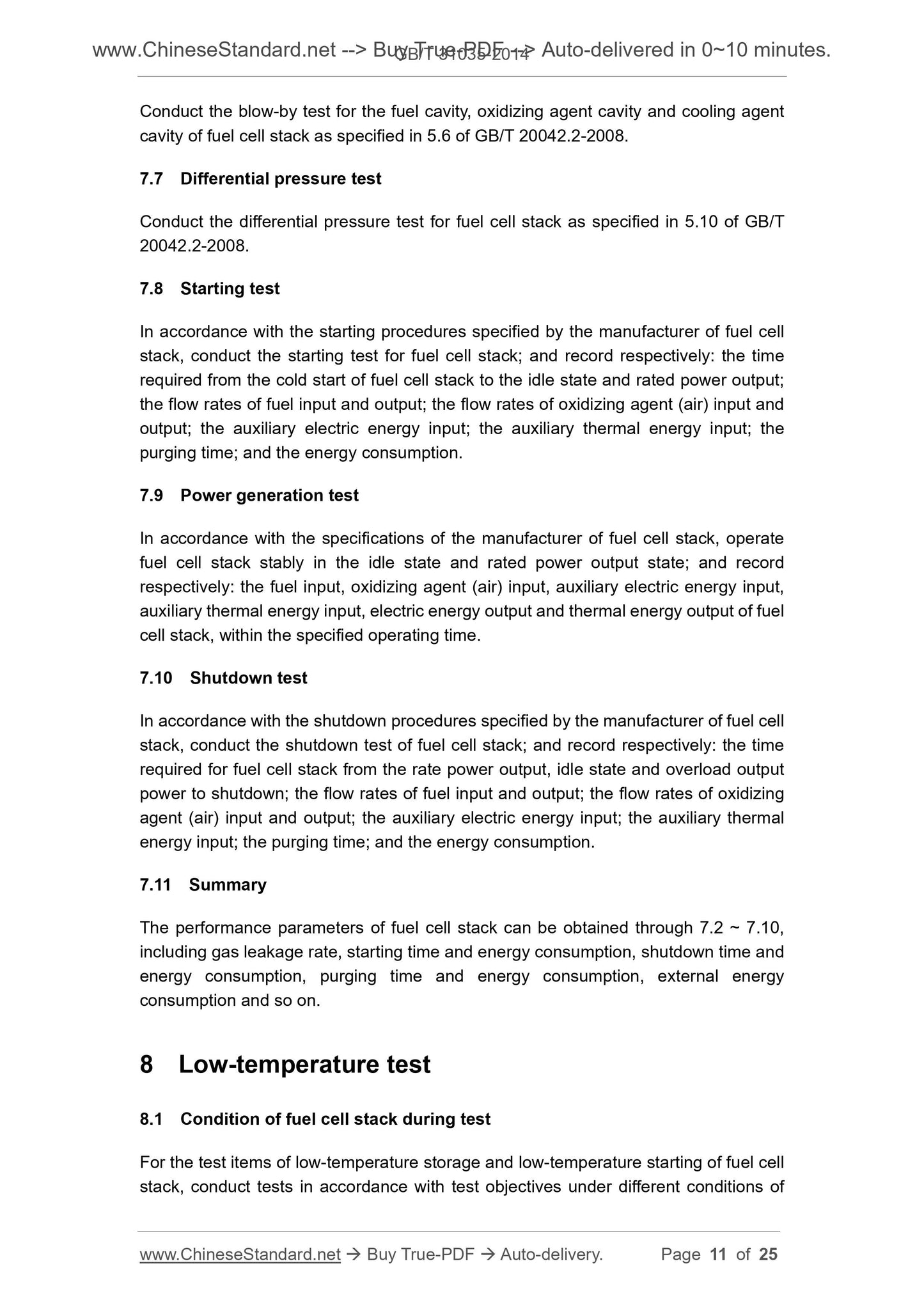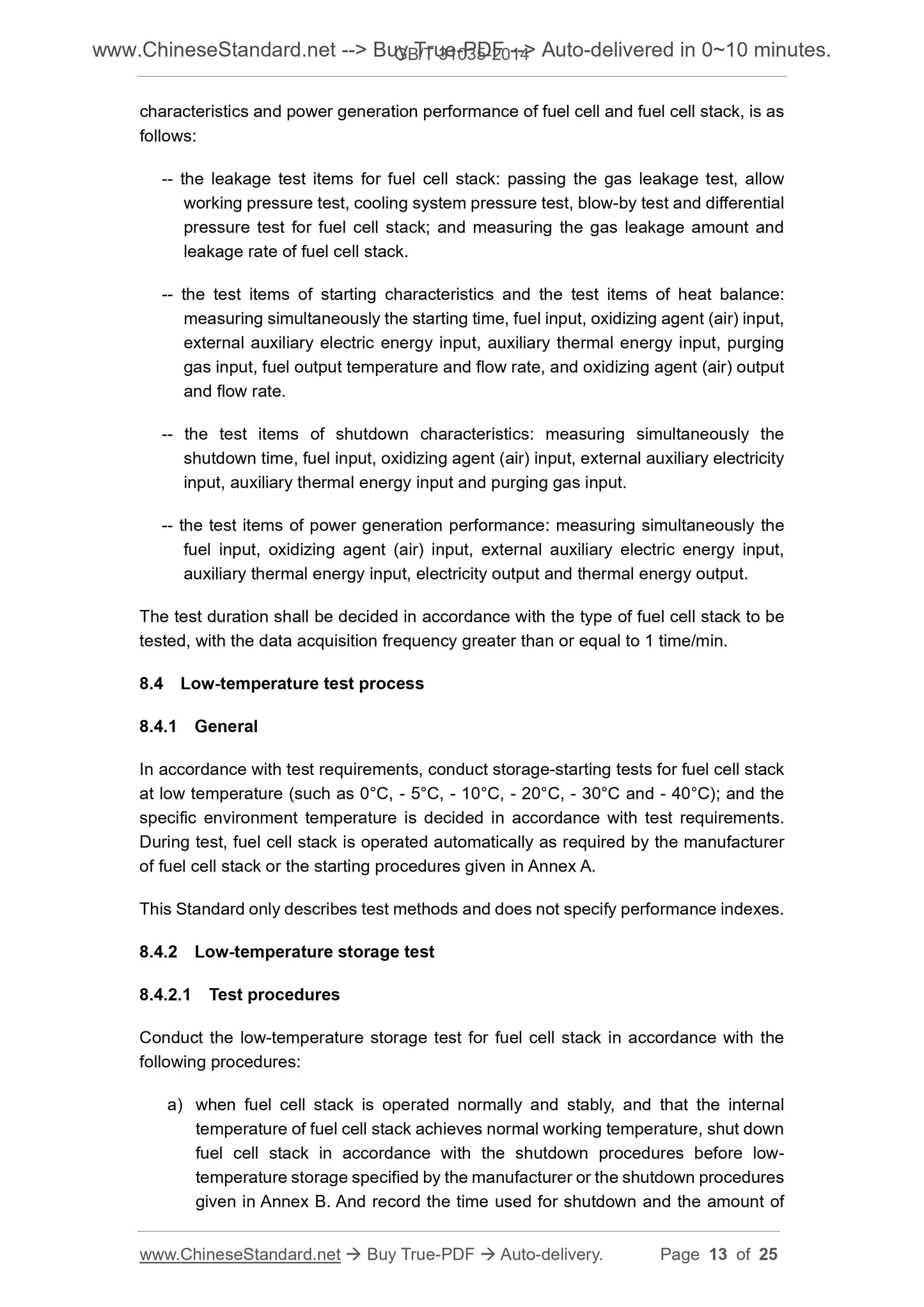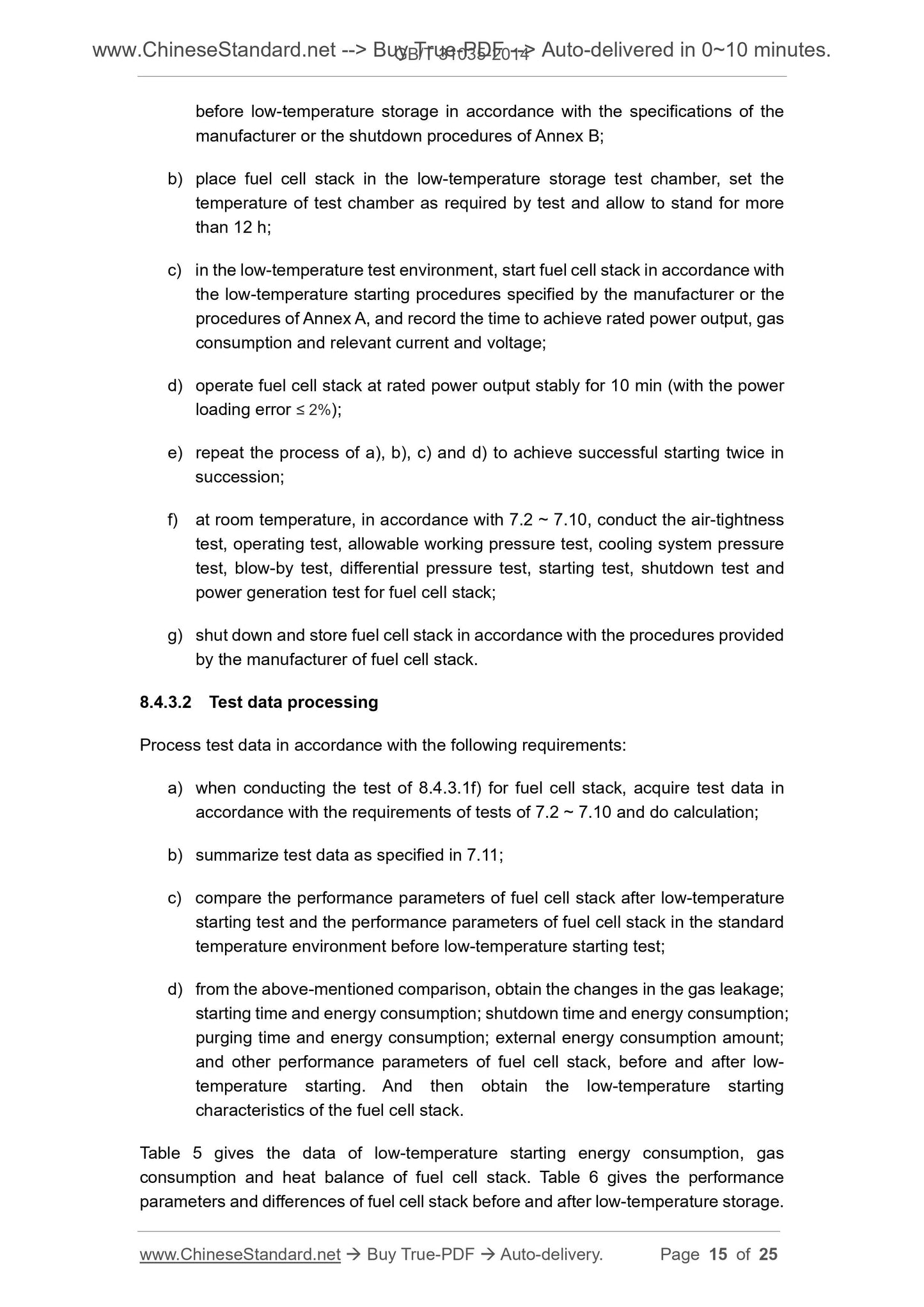1
/
of
8
www.ChineseStandard.us -- Field Test Asia Pte. Ltd.
GB/T 31035-2014 English PDF (GB/T31035-2014)
GB/T 31035-2014 English PDF (GB/T31035-2014)
Regular price
$285.00
Regular price
Sale price
$285.00
Unit price
/
per
Shipping calculated at checkout.
Couldn't load pickup availability
GB/T 31035-2014: Test methods for proton exchange membrane fuel cell stack at subzero environment
Delivery: 9 seconds. Download (and Email) true-PDF + Invoice.Get Quotation: Click GB/T 31035-2014 (Self-service in 1-minute)
Newer / historical versions: GB/T 31035-2014
Preview True-PDF
Scope
This Standard specifies the general safety requirements, test conditions, testinstrument accuracies, routine tests before low temperature test, low temperature test
methods and test reports for proton exchange membrane fuel cell stack in the subzero
environment (below 0°C).
This Standard applies to tests for the storage, starting and working performance of
proton exchange membrane cell stack in the subzero environment (below 0°C).
Basic Data
| Standard ID | GB/T 31035-2014 (GB/T31035-2014) |
| Description (Translated English) | Test methods for proton exchange membrane fuel cell stack at subzero environment |
| Sector / Industry | National Standard (Recommended) |
| Classification of Chinese Standard | K82 |
| Classification of International Standard | 27.070 |
| Word Count Estimation | 20,260 |
| Date of Issue | 12/5/2014 |
| Date of Implementation | 7/1/2015 |
| Quoted Standard | GB/T 28816; GB/T 20042.2-2008 |
| Regulation (derived from) | Announcement of Newly Approved National Standards 2014 No. 27 |
| Issuing agency(ies) | General Administration of Quality Supervision, Inspection and Quarantine of the People's Republic of China, Standardization Administration of the People's Republic of China |
| Summary | This Standard specifies under low temperature (0��C below) conditions, general safety requirements for proton exchange membrane fuel cell stack, test conditions, test instrument accuracy, routine tests before the low temperature test and low-temperature te |
Share
